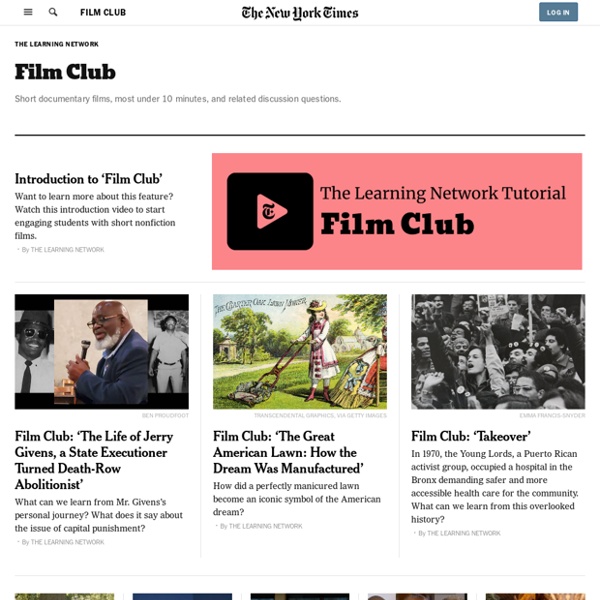Zoom
Trash



https://www.nytimes.com/column/learning-film-club
Related: Speaking • Lesson plans • Anglais • Writing prompts • barathbalajiEnglish Language Arts: Writing Prompts/Journal Topics What is... What is something you dislike about yourself? What is something you do well? What is your favourite room in your home and why? What is a good neighbour? BusyTeacher.org YouTube, as well as websites such as wikihow.com, instructables.com, and soyouwanna.com, have an incredible assortment of guides on how to do almost anything, from cutting up onions to making paper airplanes. In this article, I’m going to explain how to adapt a video tutorial into a listening lesson for your ESL/EFL classes. How-to videos contain a number of features which makes them perfect for exploitation in the ESL/EFL classroom: authentic English with natural pronunciation content that relates to everyday life a wide range of topics that can be used images and (in some cases) titles and subtitles which make the meaning clearer the pleasure of learning a useful skill and new English vocabulary at the same time
Festisite Festisite Poems & Rhyme An organized collection of poems. Post your own and get feedback. Roll & Explain! Here’s a quick post with a tweak to two popular speaking/writing activities. The game can be played in small groups or as a whole class (B1 and above.) Roll&Explain.pdf One student rolls two dice four times: one to choose the person in the situation, another one for the action, a third one to decide on the place, and finally a fourth one to determine the time. Focus on grammar first by having the student come up with a grammatically correct sentence that describes the situation.
Students Can Respond to Daily Writing Prompts, Inspired by The New York Times, at Home for Free Update: We are offering two free webinars for teachers on Wednesday, March 18, to help teachers learn more about how to get started using The Learning Network. Schools around the country have closed their doors and switched to remote learning in an attempt to slow the spread of the coronavirus outbreak. If you are a teacher or parent looking for ways to keep your students reading, writing and thinking critically during these uncertain times, The Learning Network offers a dozen new writing prompts each week, all based on Times articles, photographs, illustrations, videos and graphs, about a wide array of issues, including internet memes, climate change, the #MeToo movement, racism, the 2020 election and healthy habits. All of these activities are completely free for everyone. Here is how to get started. Students can create a free account by pressing the “Log In” button on the top right-hand corner of the screen.
ESL Conversation Cards This page has all of the ESL conversation cards from the Excellent ESL 4U site collected together on one page. For each topic there are two conversation cards for you to download. When you are learning to speak and having a conversation in English it is often difficult to think of something to talk about. You try hard to think of something to say, but are not sure what to talk about. This page will help you with that as you can use the conversation cards from this page. Lesson plans Functional language Mind-mapping social encounters – a generic lesson plan (shortlisted for Teaching English British Council Blog of the Month award). [worksheet] Listing advantages and disadvantages (A2). [worksheet] Lesson share: emailing (B1-B2). A lesson on writing work-related emails that won Onestopenglish Lesson Share competition for October 2016. [worksheet] Tell me about your favourite technology (B1).
10 Writing Prompt Tools for Creative Inspiration I love writing… blog posts, stories, poems, and more. As much as I love it though, writing can be a challenge. Often one of the most difficult parts is just getting started. On-Demand Webinar: Teach Across the Curriculum With New York Times-Inspired Daily Prompts Do you wish you could easily bring current issues and events into English, social studies, science or math class? For example, would you like your students to develop arguments using topics they care about, like social media, football, pop culture or the criminal justice system? Do you wish they could connect what they’re studying in class to themes and controversies relevant to today’s world, on issues from race, gender and identity to genetics and climate change? Every school day we publish fresh writing prompts inspired by current New York Times articles, photography, art and even graphs. In this 43-minute webinar, recorded live in Feb. 2019, join Learning Network editors, along with guest students and their teachers, to explore how to use our thousands of free writing prompts for everyday low-stakes writing practice across the curriculum. We discuss ways teachers can: